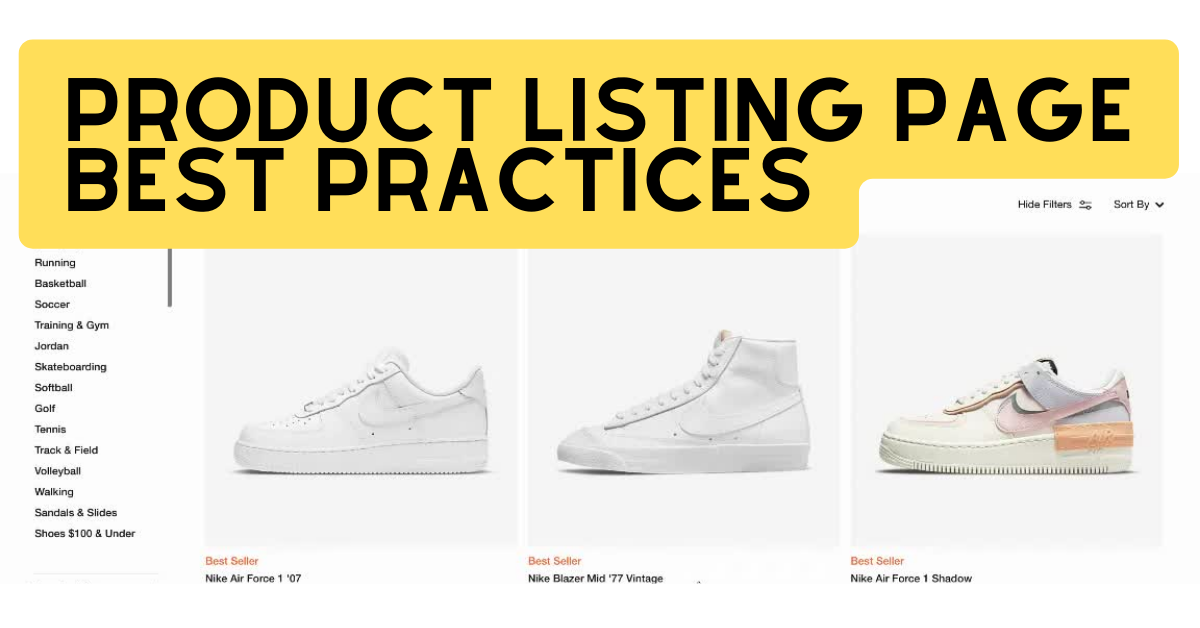Understanding the Basics of Selling Apparel on Amazon
When it comes to selling shirts on Amazon, understanding the basics is crucial for success. There are different types of seller accounts available, including individual and professional accounts. Individual accounts are free but charge a $0.99 fee per sale, while professional accounts cost $39.99 per month but offer more benefits such as inventory management tools and performance metrics. Additionally, Amazon charges a selling fee of 15% on most clothing items, which should be factored into your pricing strategy. Furthermore, all sellers must comply with Amazon’s policies and regulations, including those related to product authenticity, copyright infringement, and return policies. To ensure profitability, it’s essential to understand these fees and requirements before listing your products.
Creating High-Quality Product Listings
Creating high-quality product listings is crucial for selling shirts on Amazon. It is essential to understand that your product listings are the first point of contact between your potential customers and your products. Therefore, it is vital to make a good impression by providing detailed and accurate information about your shirts. This will not only help attract more customers but also increase the chances of selling your products. In this section, we will discuss the importance of creating high-quality product listings and provide tips on how to do it effectively.
One of the most critical aspects of creating high-quality product listings is taking professional photos. When customers are browsing through Amazon, they rely heavily on the images provided to make their purchasing decisions. Therefore, it is crucial to take high-quality photos that showcase your shirts from different angles. This will help customers get a better understanding of the product and increase the chances of selling your shirts. Additionally, ensure that the images are clear, well-lit, and of high resolution to make them more appealing to potential customers.
Another important aspect of creating high-quality product listings is writing detailed descriptions. The description should provide all the necessary information about the shirt, including the material, size, color, and any other relevant details. This will help customers make informed purchasing decisions and reduce the likelihood of returns due to misunderstandings. Furthermore, ensure that the description is well-written, easy to read, and free of grammatical errors to maintain a professional image.
Optimizing titles for search is also vital for creating high-quality product listings. When customers search for shirts on Amazon, they usually type in specific keywords related to what they are looking for. Therefore, it is crucial to include these keywords in your title to increase the visibility of your product listings. However, avoid keyword stuffing, as this can negatively impact your product’s performance on Amazon. Instead, focus on creating titles that are descriptive, concise, and include relevant keywords naturally.
Finally, ensure that your product listings are accurate and up-to-date. This includes updating your inventory regularly to reflect the current stock levels and ensuring that the product details match the actual product. Inaccurate listings can lead to customer dissatisfaction, negative reviews, and even account suspension. Therefore, it is crucial to double-check your listings regularly to ensure they are accurate and complete.
In conclusion, creating high-quality product listings is essential for selling shirts on Amazon successfully. By taking professional photos, writing detailed descriptions, optimizing titles for search, and ensuring accuracy and up-to-dateness, you can increase the visibility of your products, attract more customers, and ultimately boost your sales. Remember, your product listings are the face of your business on Amazon, so make sure they reflect positively on your brand.
Keyword Research and SEO Strategies
Keyword research is a crucial step in optimizing your product listings for search on Amazon. This process involves identifying the most relevant and frequently used keywords by potential customers when searching for shirts. Utilizing tools such as Amazon’s keyword research tool, Google Trends, or third-party software can help you find the best keywords for your products. Once you have identified these keywords, incorporate them into your product titles, descriptions, and tags to improve your product’s visibility in search results. Additionally, regularly monitor and adjust your keywords based on performance metrics to ensure optimal SEO.
Another effective SEO strategy is to create a robust and detailed product description. This not only helps customers understand the features and benefits of your product but also provides an opportunity to include more keywords naturally. However, ensure that your descriptions are not overly stuffed with keywords, as this can negatively impact your product’s visibility. Instead, focus on creating a well-written, informative, and engaging description that appeals to both customers and Amazon’s algorithms.
High-quality images are also essential for SEO. Including multiple images from different angles can help showcase your product in the best possible light, increasing the likelihood of customers clicking on your listing. Furthermore, optimizing your images with alt text that includes your target keywords can further enhance your SEO efforts.
Finally, maintaining a high level of customer satisfaction is critical for SEO. Positive reviews and feedback not only improve your product’s visibility but also increase customer trust and confidence in your brand. Encourage customers to leave reviews by providing excellent customer service, responding promptly to inquiries, and ensuring that your products meet or exceed customer expectations.
By implementing these SEO strategies, you can significantly improve your product’s visibility on Amazon, drive more traffic to your listings, and ultimately increase sales. Remember, SEO is an ongoing process that requires continuous monitoring and optimization to achieve the best results. As you gain more experience selling shirts on Amazon, you will develop a deeper understanding of what works best for your business and can adjust your strategies accordingly.
Setting Competitive Prices and Managing Inventory
Setting competitive prices and managing inventory effectively are crucial aspects of selling shirts on Amazon. Pricing your products correctly can significantly impact your sales and profitability. It’s essential to research your competitors and understand the current market trends to set prices that are competitive yet profitable. Additionally, keeping track of your inventory levels is vital to avoid overselling or underselling your products. This not only helps maintain customer satisfaction but also ensures that you’re not losing potential sales due to stockouts or overstock situations. By continuously monitoring your sales data and adjusting your pricing and inventory accordingly, you can optimize your listings for better performance and increase your chances of success in the competitive world of Amazon selling.
Marketing and Promoting Your Products
Once you have set up your Amazon store and listed your shirts, it’s time to start marketing and promoting your products. This step is crucial to increasing visibility, driving traffic to your listings, and ultimately boosting sales. Here are some effective strategies to help you market and promote your shirts on Amazon:
1. Utilize Amazon Advertising: Amazon offers a variety of advertising options, including Sponsored Products and Sponsored Brands, which can help you reach more customers and increase your sales. These ads are targeted based on customer searches and browsing history, making them highly effective at attracting potential buyers to your listings.
2. Leverage Social Media: Social media platforms like Facebook, Instagram, and Twitter can be powerful tools for promoting your products. Share high-quality images of your shirts, engage with your followers by responding to comments and messages, and use relevant hashtags to increase your reach. You can also collaborate with influencers or run paid ads on these platforms to further boost your visibility.
3. Email Marketing: Building an email list of customers and potential buyers can help you stay in touch with them and inform them about new products, promotions, and special offers. Use email marketing platforms like Mailchimp or Constant Contact to create and send professional-looking emails that drive traffic to your Amazon listings.
4. Content Marketing: Creating valuable content related to your niche can attract potential customers and establish your brand as an authority in the industry. Write blog posts, create videos, or produce podcasts that provide useful information or entertainment for your target audience. This will not only help you promote your products but also build trust and loyalty among your customers.
5. Optimize Your Product Listings for SEO: Ensure that your product listings are optimized for search engine optimization (SEO) by including relevant keywords in your titles, descriptions, and tags. This will help your listings appear higher in Amazon’s search results, making them more visible to potential buyers.
6. Run Promotions and Discounts: Offering promotions and discounts can be an effective way to attract more customers to your listings and increase sales. Consider running limited-time sales, offering bundle discounts, or providing free shipping to incentivize buyers to purchase your shirts.
7. Encourage Customer Reviews: Customer reviews play a crucial role in building trust and credibility among potential buyers. Encourage your customers to leave reviews by offering incentives, such as discounts or free products, in exchange for their feedback. Positive reviews can significantly improve your product’s visibility and increase sales.
8. Utilize Amazon’s Promotional Tools: Amazon offers various promotional tools that can help you increase your sales and visibility. For example, you can use Amazon’s “Deal of the Day” feature to offer limited-time discounts on your products, or participate in Amazon’s “Lightning Deals” to attract more customers to your listings.
9. Partner with Other Sellers: Collaborating with other sellers in your niche can help you reach a wider audience and gain more exposure for your products. Consider partnering with complementary brands or sellers to cross-promote each other’s products and increase your visibility on Amazon.
10. Monitor and Analyze Your Performance: Keep track of your sales, customer feedback, and other key metrics to understand what’s working and what needs improvement. Use this data to adjust your marketing strategies and optimize your product listings for better performance.
By implementing these marketing and promotional strategies, you can effectively increase your visibility, drive more traffic to your listings, and ultimately boost your sales on Amazon. Remember to continuously monitor your performance and adjust your strategies as needed to stay competitive in the market.
Customer Reviews and Feedback
Customer reviews and feedback are essential components of selling shirts on Amazon. Positive reviews not only increase the credibility of your products but also enhance your visibility in search results. Encourage your customers to leave reviews by providing excellent customer service, responding promptly to their queries, and ensuring that your products meet their expectations. To further boost your review count, consider offering incentives such as discounts or free shipping on their next purchase. However, always adhere to Amazon’s policies regarding review solicitation to avoid penalties. Continuously monitor your reviews and use the feedback to improve your product listings and customer service. This proactive approach will help you build a strong reputation on Amazon and increase your sales.
Compliance with Amazon Policies and Regulations
When selling shirts on Amazon, it is crucial to comply with Amazon’s policies and regulations to avoid account suspension or termination. One of the most important guidelines to follow is ensuring product authenticity. Amazon strictly prohibits the sale of counterfeit or pirated items, and sellers who violate this policy may face penalties, including account suspension or legal action. To avoid this, ensure that all products are genuine and sourced from authorized suppliers or manufacturers. Additionally, be aware of copyright infringement laws and ensure that your product listings do not violate any copyrights or trademarks. This includes using high-quality images that you have the right to use, as well as avoiding the use of copyrighted text or logos in your product descriptions. Another key regulation to comply with is Amazon’s return policy. Amazon requires sellers to have a clear return policy in place, which must be communicated to customers before they make a purchase. Failure to comply with this policy can result in negative feedback and potential account suspension. Furthermore, Amazon has strict guidelines regarding product safety and compliance with consumer protection laws. Ensure that your products meet all relevant safety standards and comply with consumer protection laws, such as labeling requirements and product safety certifications. Finally, Amazon’s policy on prohibited items must be adhered to. Certain items, such as weapons, drugs, and counterfeit goods, are strictly prohibited from being sold on the platform. Ensure that your products are not listed on Amazon’s prohibited items list to avoid account suspension or termination. In summary, compliance with Amazon’s policies and regulations is essential for successfully selling shirts on Amazon. By ensuring product authenticity, adhering to copyright laws, having a clear return policy, complying with product safety standards, and avoiding prohibited items, you can maintain a positive seller reputation and avoid potential penalties.
Scaling Your Business and Expanding Your Product Line
Once you’ve established a successful shirt-selling business on Amazon, it’s time to consider scaling your operations and expanding your product line. This not only helps increase your sales and profitability but also strengthens your brand presence in the competitive Amazon marketplace. To scale your business effectively, follow these steps:
1. Continuously Monitor and Optimize Your Listings: Regularly review your product listings to ensure they are up-to-date, accurate, and appealing to potential customers. Make adjustments as necessary to improve visibility, conversion rates, and overall performance.
2. Expand Your Product Line: Introduce new shirt designs, styles, and sizes to cater to a wider audience and increase customer satisfaction. This will also help you gain more visibility in search results and attract repeat business from satisfied customers.
3. Improve Customer Service: Focus on providing exceptional customer service by responding promptly to inquiries, resolving issues efficiently, and encouraging customer feedback. Positive reviews and ratings are crucial for maintaining a strong seller reputation and attracting more customers.
4. Utilize Amazon’s Performance Metrics: Leverage Amazon’s performance metrics, such as sales rank, conversion rate, and customer reviews, to identify areas for improvement and optimize your listings accordingly.
5. Invest in Marketing and Advertising: Consider investing in Amazon advertising, social media marketing, and email marketing to increase brand awareness, drive traffic to your listings, and boost sales.
6. Automate Tasks and Streamline Processes: As your business grows, automate tasks such as inventory management, order fulfillment, and customer service responses to save time and resources. This will allow you to focus on more strategic aspects of your business.
7. Analyze and Adjust Pricing Strategies: Continuously monitor your competitors’ prices and adjust your pricing strategies accordingly to stay competitive while maintaining profitability.
8. Expand to Other Platforms: Once you’ve established a successful business on Amazon, consider expanding to other e-commerce platforms or creating your own website to diversify your sales channels and reduce reliance on a single marketplace.
By following these steps, you can successfully scale your shirt-selling business on Amazon and expand your product line to attract more customers and increase profitability. Remember to always comply with Amazon’s policies and regulations to avoid any penalties or account suspension.



